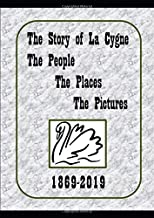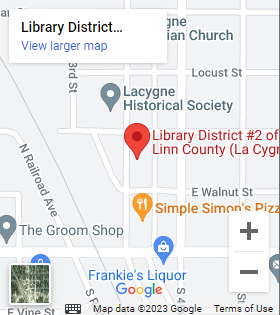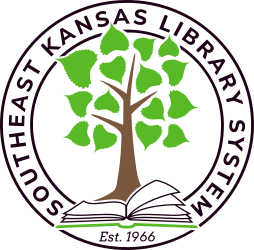The Historic Story of La Cygne
The story of the naming of the river, from which La Cygne took its name, is here related as it was told in 1881 to W. A. Mitchell, author of “Linn County, Kansas–A History,” by John Roubidoux, head chief of the Miami tribe.
There has always been a curious inquiry into the origin of the name of our river. It is an Indian legend based in part on a pathetic chapter in American history. The story is authoritatively given as follows: In 1756 the British carried away bodily the French people in the settlement of Grand Pre in Acadia, a colony since peopled by English and called Nova Scotia, a tragedy of such great pathos and beauty that it was used by Longfellow as the theme of his poem “Evangeline,” the heroine being a real character in life who came into the western country in search of her lover Gabriel Lajeunesse, who with others of the Acadian village had been carried to the shores of Louisiana on the Gulf coast. She bewildered and wonderingly, set out through the Canadian wilderness, past Quebec, on to Pierre Marquette and down the lakes and the Illinois River to the Mississippi, up the Missouri to the Osage.
It is not so recorded, but it is entirely presumable that Evangeline was accompanied by men of her own nationality in this prolonged adventure. In seeking information from the native Indians as they proceeded up the Osage river there was always the alluring story of a great “summer village” at the head water of that stream and which they finally found at what is now the lake country at the mouth of Big Sugar creek.
This country had long been French territory and by the elders of the tribe familiar with French agents and their language, they were made welcome. A teepee was set aside for Evangeline and she became intimately associated with the women of the tribe. Her story became their own romance and they eagerly sought information for her from the “runners” who were constantly passing through from one tribe to another, even locating the spot on the Gulf coast where the unhappy Acadians had been turned loose in a wilderness and eventually were mourned as a “lost people.” One day, during the routine of village work, Evangeline saw several young boys and girls approach Sona the Wise Mother of the tribe and in excited whisperings were telling of some unusual event.
“They have seen Coman and Osa,” said the Wise Mother.
Evangeline sensed a tribal romance and to the Wise Mother she said, “Tell me about it.”
“It is,” said the Wise Mother, “a long story of long ago. It estranged two big tribes who have never since been friendly. It is the story of a young war chief of the greatest prairie tribe and a beautiful young princess of our people. Coman was the young chieftain and he celebrated the close of a great buffalo hunt by appearing at our village with twenty of his young and handsome braves, all dressed in feather bonnets and beaded finery and mounted on powerful horses. They carried ceremonial banners, signifying peace and joy. Their visit was a great event, all our young people, especially the maidens, dressing in their finest to do honor to their proud guests. Osa, our princess, granddaughter of White Hair, was the comeliest among the maidens, young and pretty and arrayed in the finest new buckskin decorated elaborately in bead designs designating her royal station in the tribe.
“Coman was entranced by her. He sought her constantly. Osa manifested her admiration and attachment for him. They made it a long and merry season and when the frost came and the visitors must return to their prairie tribe, the parting was not a happy one, as White Hair refused to give Osa to the great prairie chief. Osa rebelled and threatened to follow him. The winter was a bad one and our young people hard to manage after their great festival with the visiting braves.
But when the flood waters were running out, and there were flowers and green leaves everywhere, on a bright May morning there appeared on the bank across the river twenty horsemen in war bonnets and carrying beautiful ceremonial banners. At their head was Coman dressed in his proudest trappings. He led a beautiful horse without a rider, and a second glance showed it was to carry a woman. Coman gave that beautiful and graceful salutation know as the ‘peace sign’ and dismounting, got into of the canoes to cross over to us. With some difficulty he got across, but showed that he was better as a horseman than as a boatman.
“Osa was radiant as she met him. Her luggage was brought and Coman insisted they go.
“Coman was exultant in his triumph and addressing White Hair, he said:
“Coman is a great chief of a great people. We have the Land of the Sky. We have the great high mountains where Manitou makes his home and mixes medicine for all his people. The eye never sees the end of our domain. Our warriors vanquish all opponents. Our lodges are filled with a great and happy people who own the hordes of buffalo on the plains, which give us both meat and clothing. Our war horses are numberless. When the Comanches put on their war bonnets it is a sight to thrill the world. Our people offer a royal welcome to Osa as the bride of Coman.’
“But White Hair was not convinced and said: “‘It is not wise it should be so. Osa is a daughter of the forest. her home is in a land of plenty. The land produces corn and melons, and as the seasons go there are berries, persimmons, pawpaws, grapes, and plums. The whole tribe could live on the pecans, walnuts, and hickory nuts the forests give to us. The great trees shelter us from the storms and the heat of summer. They furnish fuel for our fires in winter. There are buffalo and deer and bear, and fish in the waters. The Osages are rich and happy and grow wise in their contentment.
“‘Why should Osa go to your country where you see far and see nothing? It is a deceptive country which smiles in the spring time and then burns up the grass and leaves the earth bare. It frowns in the winter and covers the earth with snow. It has not trees. It has not water. The buffalo and deer desert it.
“‘ Your people are cruel and bloodthirsty because of the cruel country you live in. Osa should not go to live among you. The Great Spirit has placed this river between us and the sullen roar of its flood waters voice his anger.’
“Osa had an expression of dismay as she witnessed the dignified refusal of her grandfather, but stepping into the canoe she showed her decision to go with her chosen man. Coman turned the canoe into the stream and the waiting people on each side were thrilled with the beauty of the scene and its significance. With strong confident stroke Coman forced the canoe into the flood when some angry thing below seized the boat and drew it downward out of sight. In a flash the two lovers disappeared. No trace was ever seen of them or their boat. As the horrified people look upon the scene, a miracle happened. At the place where the lovers disappeared there was seen on the water two great white swans which swam away together through peaceful waters under a canopy of vines and wild rice.
“These swans were seen today by the children. They always return here. Their story is the great epic poem of the Osages.”
The assemblage of young people, who always listened to this story when told by the Wise Mother arose and beckoned them to follow, going to the great cliff at the top of Timbered Mound, from which Evangeline, as she looked over the shimmering waters of lakes and river and the green valley, spread her arms as though to embrace them and said:
“C’est le marais des cygnes.”
(It is the marsh of the swans)

This book is available at the library for $20. Checks should be made payable to the Historical Society Book Account.
Library District #2 of Linn County - LaCygne
P O Box 127 (Mailing Address)
209 N. Broadway,
La Cygne, KS 66040
► Library Hours
Mon-- Fri: 9:00 - 5:00
Sat: 9:00 - 12:00


